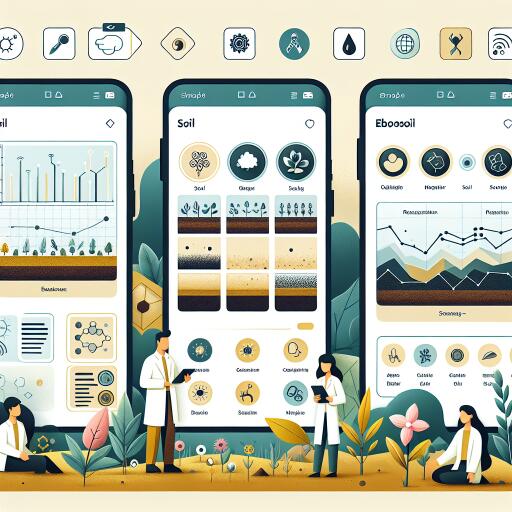
eBryoSoil: A Citizen Science Tool to Monitor Soil Ecosystems
Biological soil covers (BSCs) serve as critical components in ecosystem dynamics by improving soil stability, overseeing nutrient cycles, and impacting soil water movement. As ecosystem architects, BSCs can physically alter, sustain, or construct habitats, thereby encouraging plant community growth. These intricate interactions elucidate the crucial role BSCs play in sustaining ecological functions and highlight their significance in the vitality of ecosystems, notably within the Iberian Peninsula.
The advent of the eBryoSoil app, spanning November 2019 to January 2021, invited public participation in charting BSC communities across the Iberian landscape. The collaborative efforts of citizen scientists underscore the underlying importance of habitats and their interactions with climate variations, critical for the persistence of BSCs such as lichens and bryophytes.
The protection of diverse habitats is paramount to ensure these communities thrive. Despite encountering hurdles from the COVID-19 pandemic, this citizen science model successfully employed a bespoke app to harvest essential data on BSC communities, enhancing our understanding of their susceptibilities to climate change. This initiative exemplifies how public engagement can effectively identify and examine at-risk habitats, supporting future research on lesser-studied organisms.
BSCs are cohesive communities of photosynthetic organisms like lichens, bryophytes, and microscopic algae, intermixed with microbes and tiny arthropods. Their vital functions promote soil stability, nutrient recycling, water management, and plant community formation. As ecosystem engineers, they modify or create habitats to support other species.
Global environmental changes are challenging many of these species, particularly through climate-driven alterations in precipitation and amplified drought occurrences. Drylands, which are naturally water-constrained, are profoundly impacted as BSCs can constitute up to 70% of dryland surfaces. Their survival depends heavily on moisture, making them sensitive to shifts in weather patterns.
Key insights reveal that large temperature fluctuations shift cyanobacterial composition—integral to BSC biomass in drylands. Increased temperatures often mean reduced moisture, restricting the metabolic activity of BSC organisms. Within BSCs, bryophytes generally withstand dry heat but not when hydrated, whereas lichens are particularly vulnerable to drying, diminishing their photosynthesis.
The slow recovery of these communities—spanning hundreds of years—compounds their vulnerability. Although there’s extensive information on BSC susceptibilities in arid zones, the understanding within other ecosystems remains limited. The reaction of BSCs to changing climates across diverse ecosystems is not fully grasped.
The limited grasp on BSC responses across ecosystems, compounded by the rapid pace of climate impact, underscores the urgency for accelerated data acquisition. Conservation efforts depend on intricate data concerning biodiversity distribution and responses to threats. However, generating this much-needed information proves time-consuming and costly, posing a major obstacle, especially for small, inconspicuous organisms often overlooked in research.
Addressing this data shortage entails innovative strategies to augment the quantity, quality, and veracity of information. Smartphone-empowered citizen science initiatives amalgamate public enthusiasm with technology, producing robust research datasets. Such endeavors mitigate numerous challenges faced by scientists, such as limited time and resources.
Despite the imperative for clear and straightforward data collection, many citizen science projects prefer focus on easily recognizable species, leaving small, elusive groups like BSCs underrepresented. Yet, biodiversity is densely packed with minor species that require focused attention. Engaging initiatives aiming to bridge this gap promise both awareness and crucial conservation data.
This paper explores the potential for citizen science to advance understanding of BSCs dominated by bryophytes, lichens, and cyanobacteria. Through the SoilSkin initiative, the aim is to broaden knowledge of Iberian soil ecosystems amid climate change challenges. By equipping the public to identify and measure BSC coverage, this project merges educational outreach with the eBryoSoil app for data acquisition, seeking to address BSC distribution knowledge gaps.
The goals involve scrutinizing the efficacy of the SoilSkin app-based citizen science program focused on lesser-known organisms and expanding data regarding BSC distribution and susceptibility to environmental shifts. Analyzing data from an initial 14-month researcher-led study evaluates the utility of this citizen-assisted approach for macro-scale BSC monitoring.





Leave a Reply